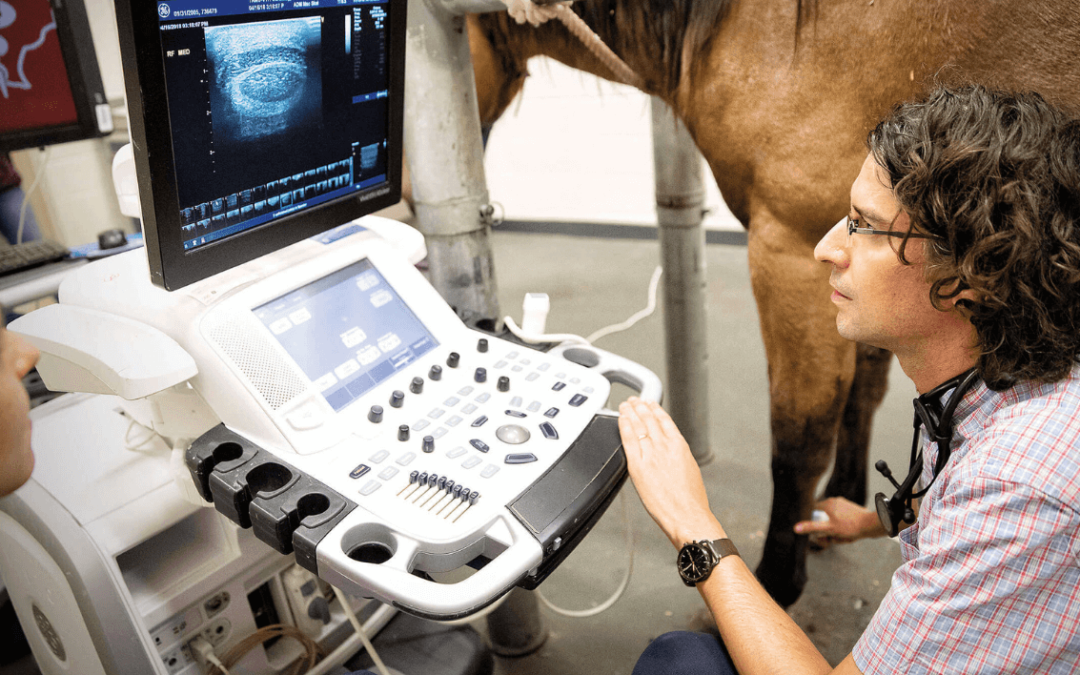EQUIMETRE VET is a scientifically validated system for measuring and analyzing the performance of racehorses. Used by trainers and veterinarians, EQUIMETRE supports scientists in their research by taking and collecting data.
Cris NAVAS, an American veterinarian and researcher, uses EQUIMETRE for his research on the sudden death of horses during exercise. Arioneo’s team exchanged with him about his studies in the equine environment as well as his use of EQUIMETRE.
“For me, the main advantage of EQUIMETRE is the scientific validation of the ECG data”
Can you please start by introducing yourself and tell us a bit more about your background?
My name is Cris Navas and I am a veterinary clinician at the University of Pennsylvania’ New Bolton center. I mainly work on the clinic floor here but I’m also an academician and a researcher. Research and teaching are also equally important in my daily work.
My specialty is large animal internal medicine, but my main interest is equine cardiac disease. I grew up riding horses, so I think this is the reason why I studied veterinary medicine. I see my profession as a way of protecting horses’ health and welfare and also the safety of riders.
What drives your motivation and your work as a scientist? What are your research interests at the moment?
I like horses and I like riding horses, so the motivation is trying to solve the main problems that affect their health and welfare. One of those big problems is sudden death during exercise. Currently, the biggest project that I am working on is a sudden death and injury prevention program.
How do you proceed to collect the data you need for your studies?
It depends on which project I am working on. Some of them are about very specific problems; for example, exercise-associated arrhythmias. For such projects, we are mostly collecting ECGs (electrocardiograms).
The main project that we are working on now, is trying to develop a protocol that will prevent injuries and sudden death. That’s a little bit broader than just collecting ECGs, so we use fitness trackers that provide cardiac-related data but also data from motion sensors and GPS. They’re very useful and very user-friendly. It allows the trainer or the rider to collect data by themselves and then automatically uploads the data collected directly to a designated cloud data storage. This way, scientists can get access to much more data. This kind of new device helps us in changing the way we collect data and allows us to collect more data than we used to.
Why did you choose EQUIMETRE to support your work? Do you have any functionality that you like in particular?
We chose EQUIMETRE because my main interest is exercise associated death and I think EQUIMETRE can be a good tool to solve this problem. For me, the main advantage of EQUIMETRE is the scientific validation of the ECG data and the heart rate functionality of the device. Fe ter Woort and Emmanuelle van Erck validated this device and now, we know that the data we get is accurate. The other advantage is that we can incorporate data from different angles or perspectives such as speed, gaits, stride, and other values associated with locomotion.
While my main interest is the cardiovascular system, injuries and death during exercise are multifactorial problems. Having the ability to incorporate data with motion sensors, GPS or even the perception of the trainer recorded in mobile applications is really interesting.
The last advantage is that it is very user friendly for trainers. The way trainers and riders collect data is easier than in the past and allows them to become part of the team and understand what we are doing.
In conclusion, what are your views on the Equine Research future?
For some of the clinical problems that we tackle, research will change in the type and amount of data that we collect. Some of the researchers will keep working traditionally and this will always be needed but I think new technologies will play a role and augment how we do research. From the sports medicine perspective, fitness trackers may also play a relevant role because they will increase the amount of data that we can get. It will be useful for disease prevention and also for monitoring health and performance.
If everybody – trainers, riders, veterinarians, regulatory organisms, and researchers – works together, we can succeed to solve some of the biggest problems in equine medicine. For me, those problems are injury and exercise-associated death. I think it’s exciting to collaborate with Arioneo and I hope from that collaboration we will find solutions for the problems we all worry about.
Keywords: scientist, horse performance and health monitoring, veterinary, equine research, electrocardiograms, onboard ECG, heart rate, scientific validation


